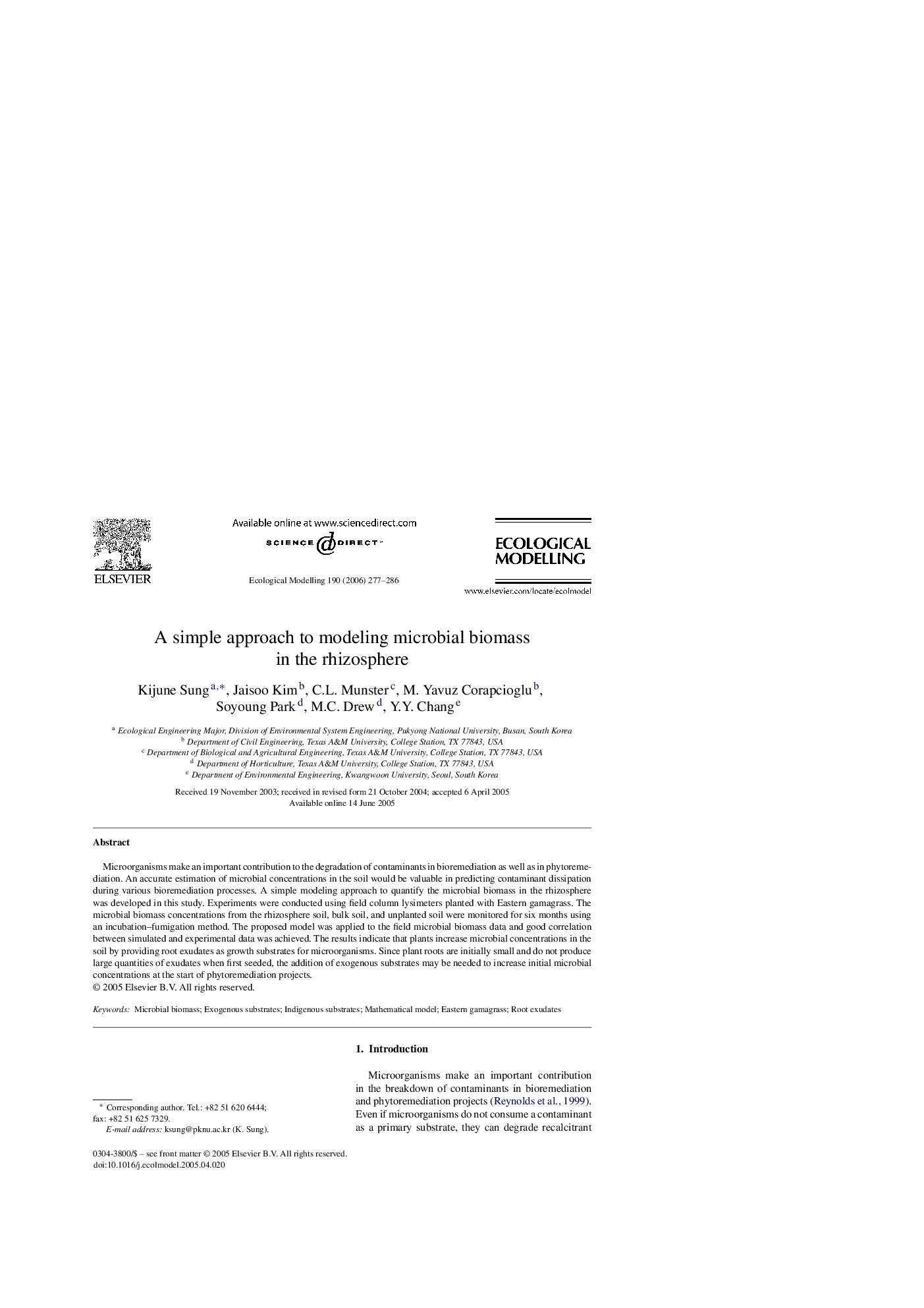| Article ID | Journal | Published Year | Pages | File Type |
|---|---|---|---|---|
| 4379322 | Ecological Modelling | 2006 | 10 Pages |
Microorganisms make an important contribution to the degradation of contaminants in bioremediation as well as in phytoremediation. An accurate estimation of microbial concentrations in the soil would be valuable in predicting contaminant dissipation during various bioremediation processes. A simple modeling approach to quantify the microbial biomass in the rhizosphere was developed in this study. Experiments were conducted using field column lysimeters planted with Eastern gamagrass. The microbial biomass concentrations from the rhizosphere soil, bulk soil, and unplanted soil were monitored for six months using an incubation–fumigation method. The proposed model was applied to the field microbial biomass data and good correlation between simulated and experimental data was achieved. The results indicate that plants increase microbial concentrations in the soil by providing root exudates as growth substrates for microorganisms. Since plant roots are initially small and do not produce large quantities of exudates when first seeded, the addition of exogenous substrates may be needed to increase initial microbial concentrations at the start of phytoremediation projects.
